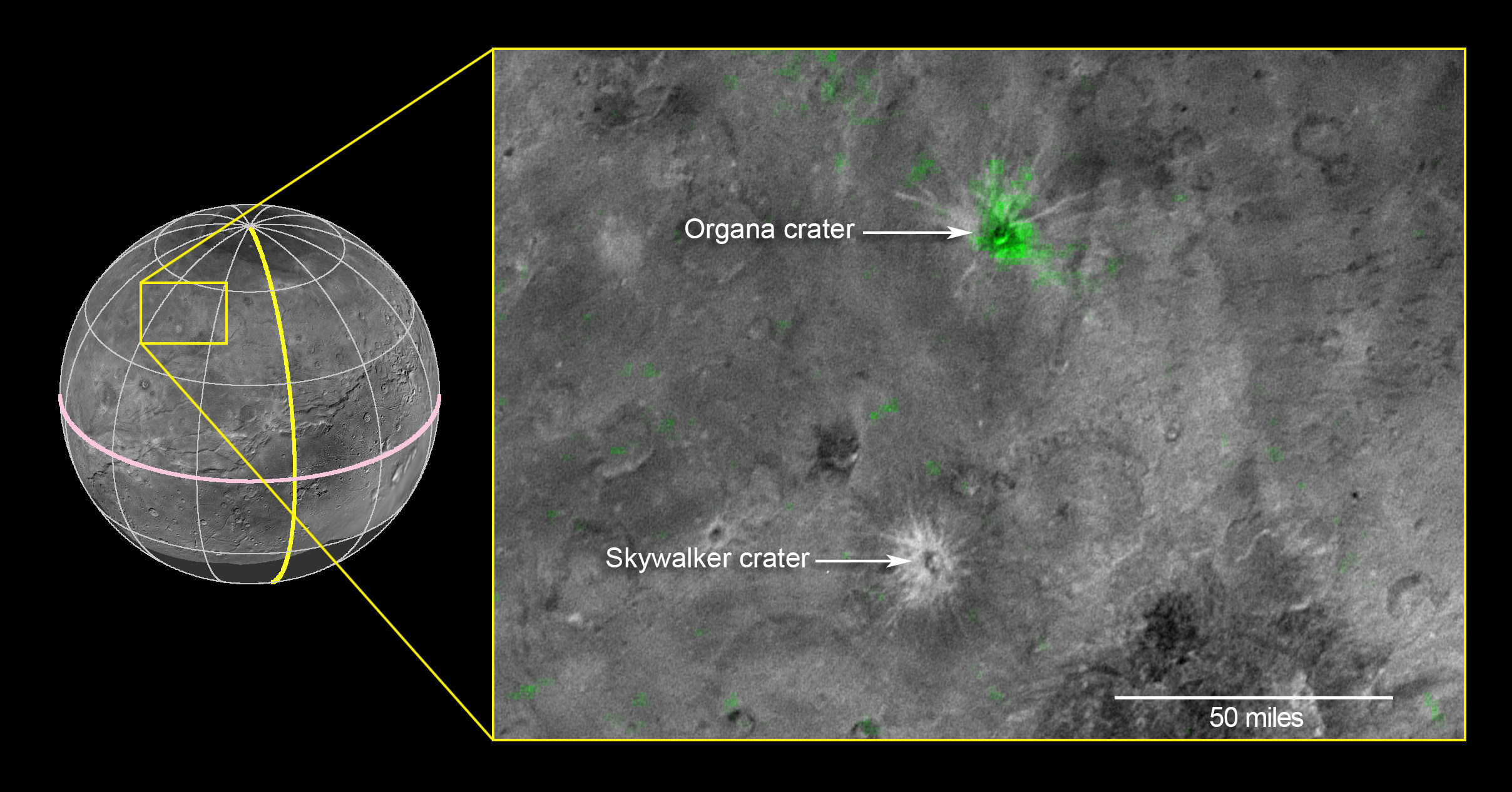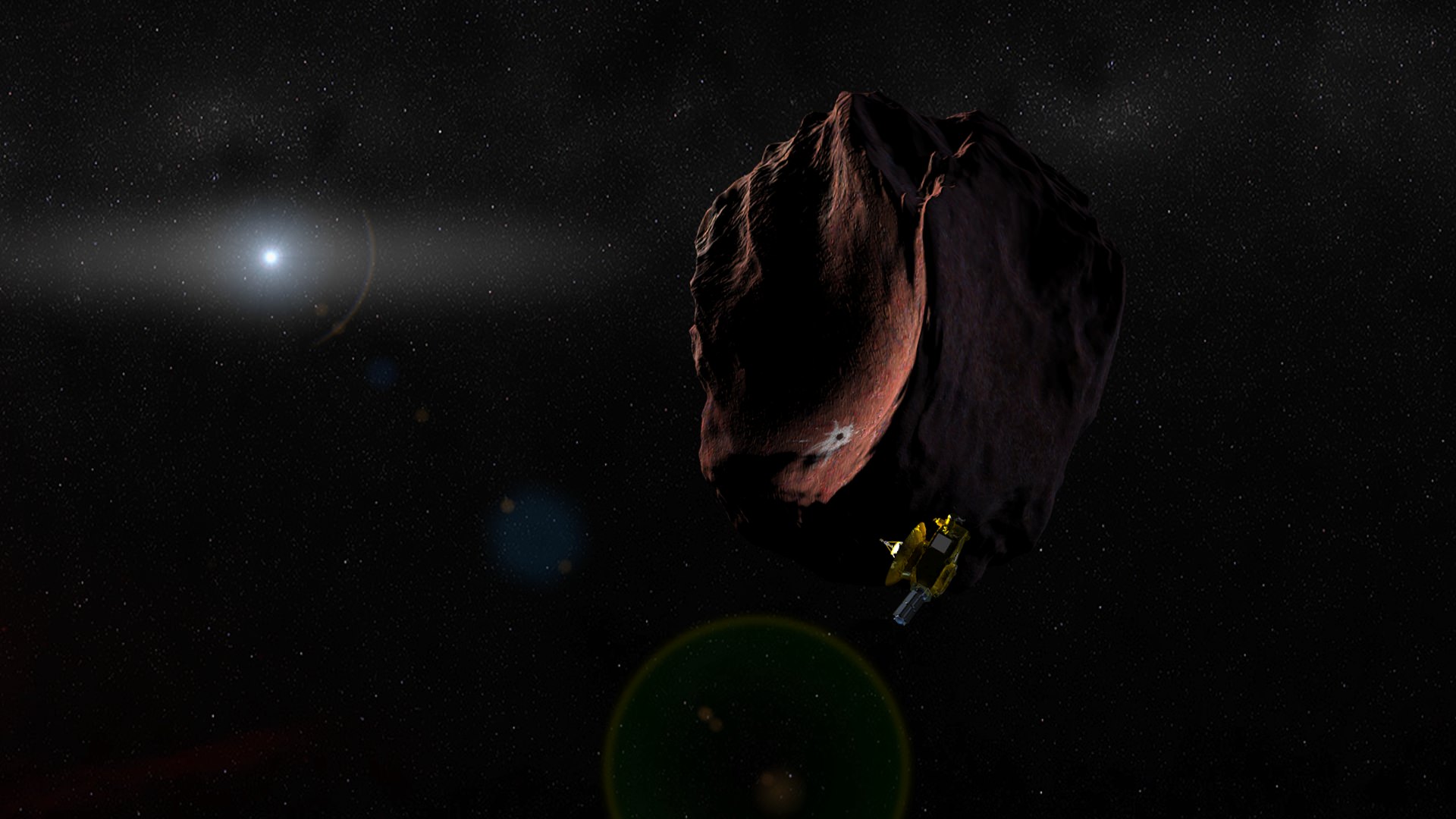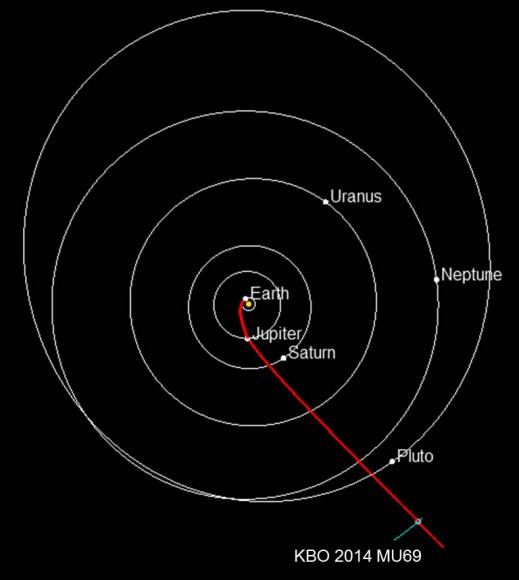Just like Luke and Leia, two craters named for the Star Wars twins (Skywalker and Organa) have many similarities. They look about the same size and shape, and appear to have been created at the same time, and therefore are about the same age. But instruments on the New Horizons spacecraft detected one major difference: Organa and its surrounding area are laced with ammonia.
“Why are these two similar-looking and similar-sized craters, so near to each other, so compositionally distinct?” asked Will Grundy, who leads the New Horizons Composition team. “We have various ideas when it comes to the ammonia in Organa. The crater could be younger, or perhaps the impact that created it hit a pocket of ammonia-rich subsurface ice. Alternatively, maybe Organa’s impactor delivered its own ammonia.”
Both craters are roughly 5 kilometers (3 miles) in diameter, with similar appearances, such as bright rays of ejecta. One apparent difference is that Organa has a central region of darker ejecta, though from the map created with data from New Horizons’ Ralph/LEISA instrument, it appears that the ammonia-rich material extends beyond this dark area.
The nearby Skywalker crater, however, shows an infrared spectrum that is similar to the rest of Charon’s craters and surface, with features mostly dominated by ordinary water ice.
“This is a fantastic discovery,” said Bill McKinnon, deputy lead for the New Horizons Geology, Geophysics and Imaging team. “Concentrated ammonia is a powerful antifreeze on icy worlds, and if the ammonia really is from Charon’s interior, it could help explain the formation of Charon’s surface by cryovolcanism, via the eruption of cold, ammonia-water magmas.”
The New Horizons team is informally naming features after various sci-fi characters. So maybe – like their Star Wars namesakes – the craters Skywalker and Organa actually are different ages, as students at the University of Leicester calculated in a paper published earlier this year. The students said that Leia would be about 2 years old than Luke because of relative velocity time dilation – which describes the bending of spacetime due to differences in speed. Their different journeys through space in various craft would change how fast they are aging.
But we digress…
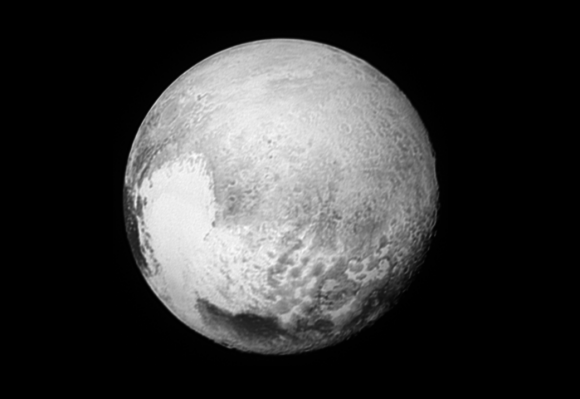
Meanwhile, as New Horizons continues to send back more imagery and data, the spacecraft’s hydrazine-fueled thrusters completed the third of four maneuvers to direct the spacecraft towards an ancient and distant Kuiper Belt Object named 2014 MU69.
As we explained in our previous article, the four maneuvers are designed change New Horizons’ path to send it toward a close encounter with the KBO on Jan. 1, 2019. Even though the New Horizons spacecraft hasn’t officially been approved to do this flyby as an extended mission, the team is taking advantage of being able to do the maneuvers early, thereby saving fuel.
The science team hopes to bring the spacecraft even closer to MU69 than it came to Pluto this summer, which was approximately 7,750 miles (12,500 kilometers)
The fourth and final KBO targeting maneuver is scheduled for next week, Nov. 4, 2015.
Another image released this week from the New Horizons team:
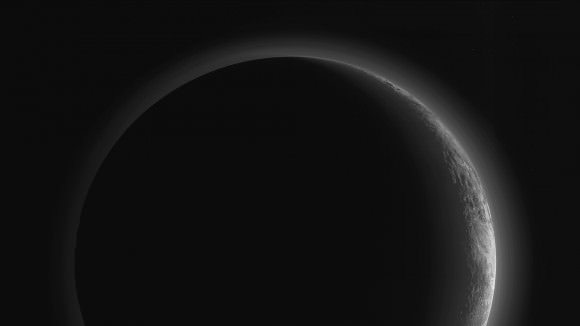
In September, the New Horizons team released a stunning but incomplete image of Pluto’s crescent. Thanks to new processing work by the science team, New Horizons is releasing the entire, breathtaking image of Pluto.
Alex Parker, one of the science team members who worked on the image said on Twitter, “The haze over Pluto’s dark limb were frustratingly run through with instrumental artifacts. This version is my latest destripe and denoise.” He also noted a few things: look closely, and you can see background stars behind Pluto. Additionally, look at Pluto’s shadowed limb:
Another wonderful thing about that new image: the bright haze gives us a look at how bumpy Pluto's shadowed limb is! pic.twitter.com/hUSGIZB8Bw
— Alex Parker (@Alex_Parker) October 29, 2015
Sources: NASA, Johns Hopkins U.

